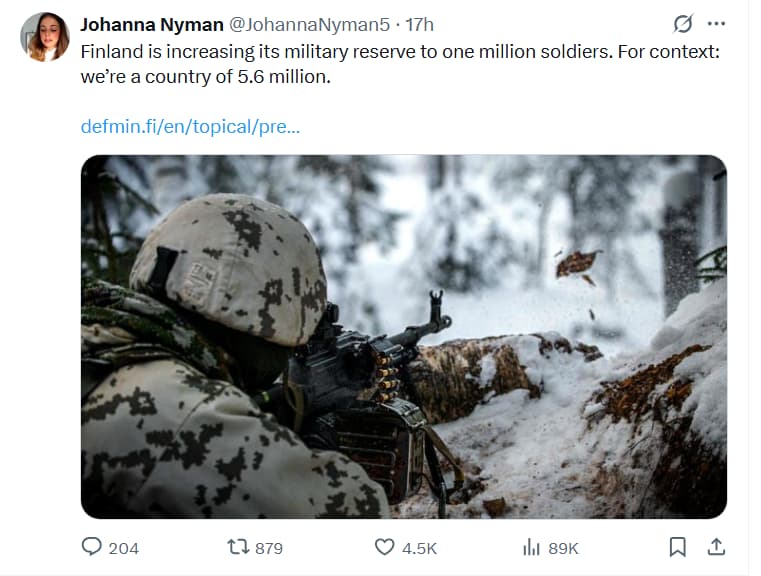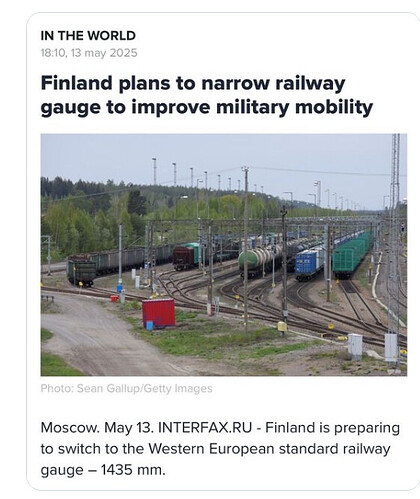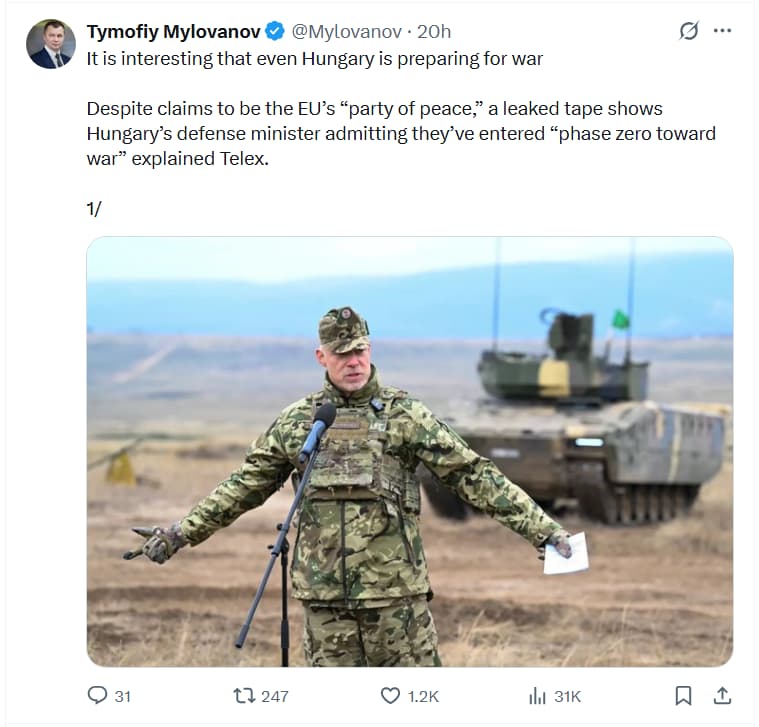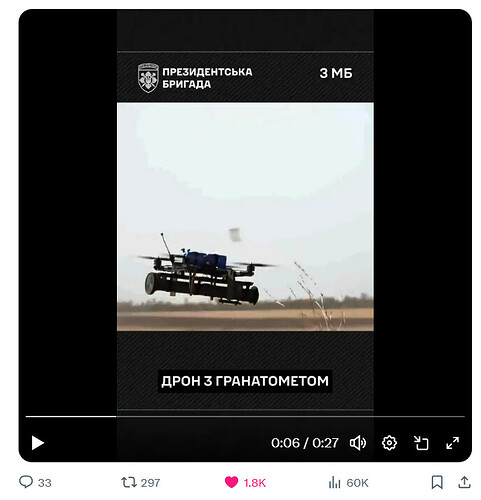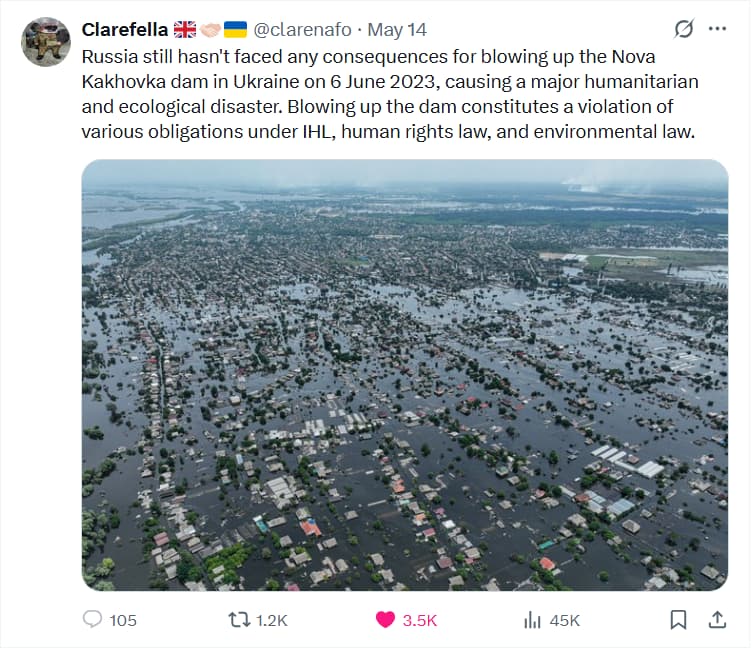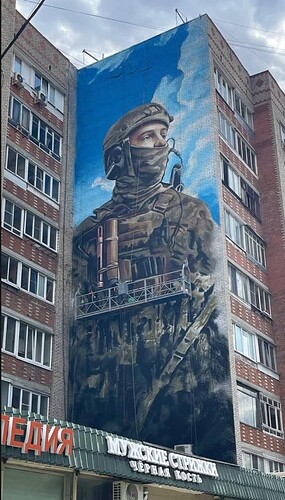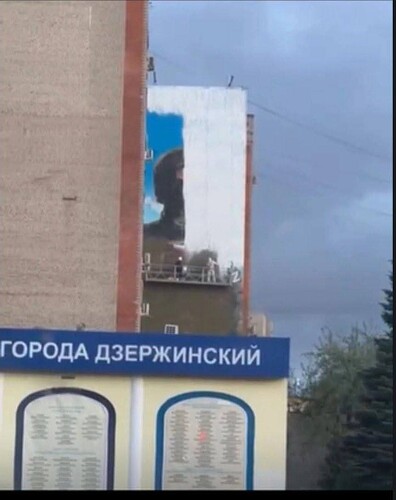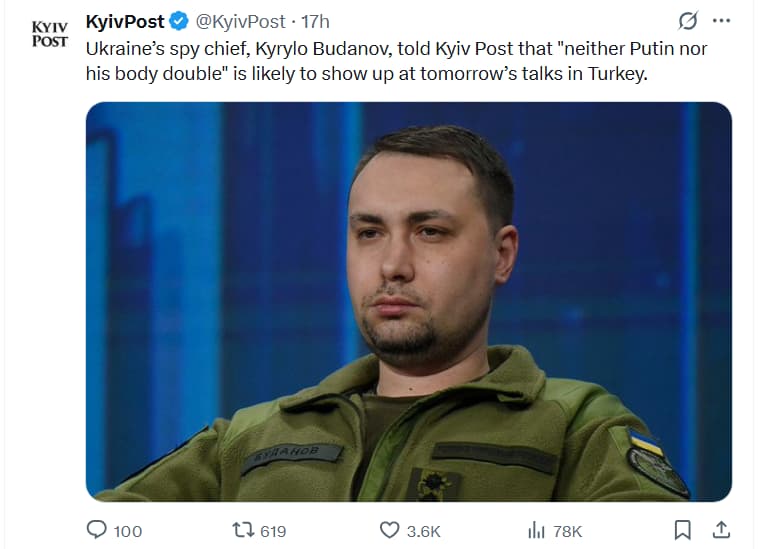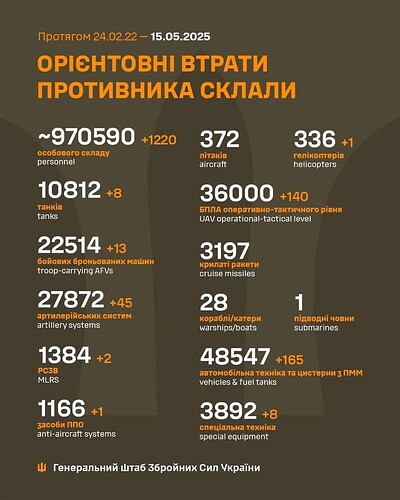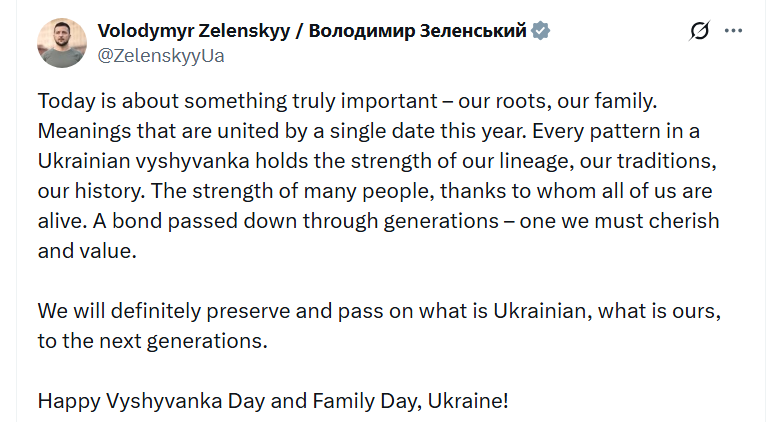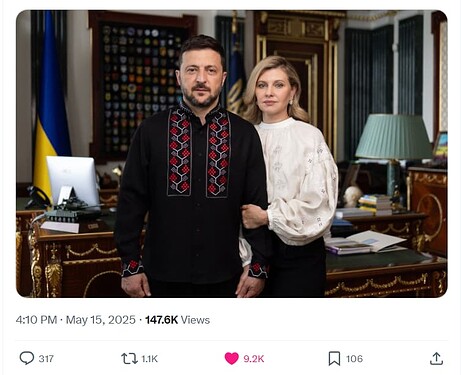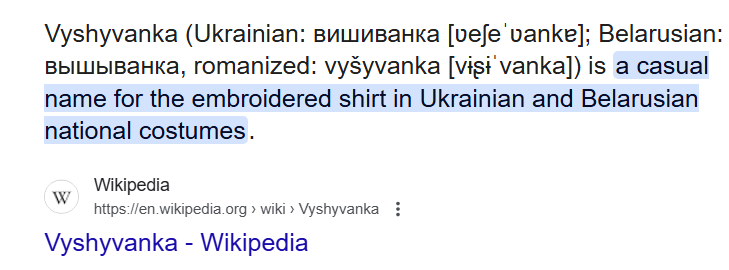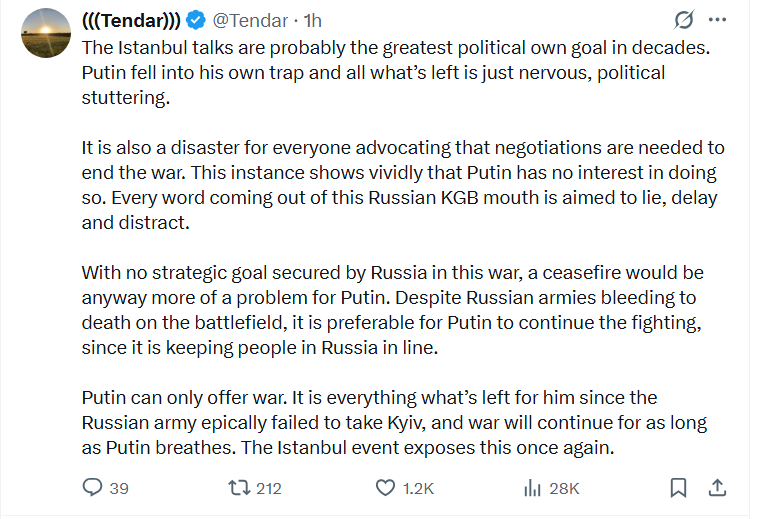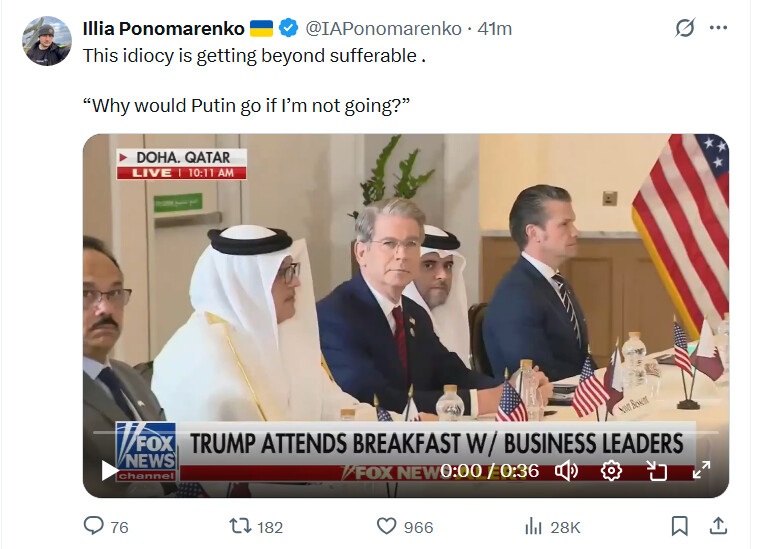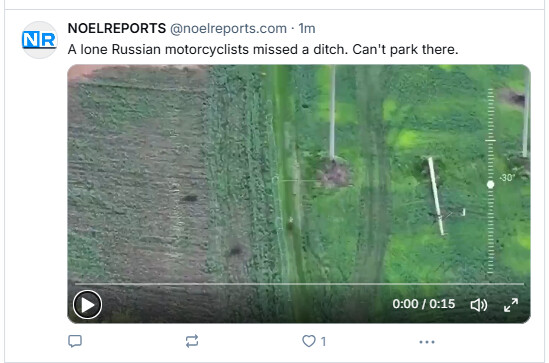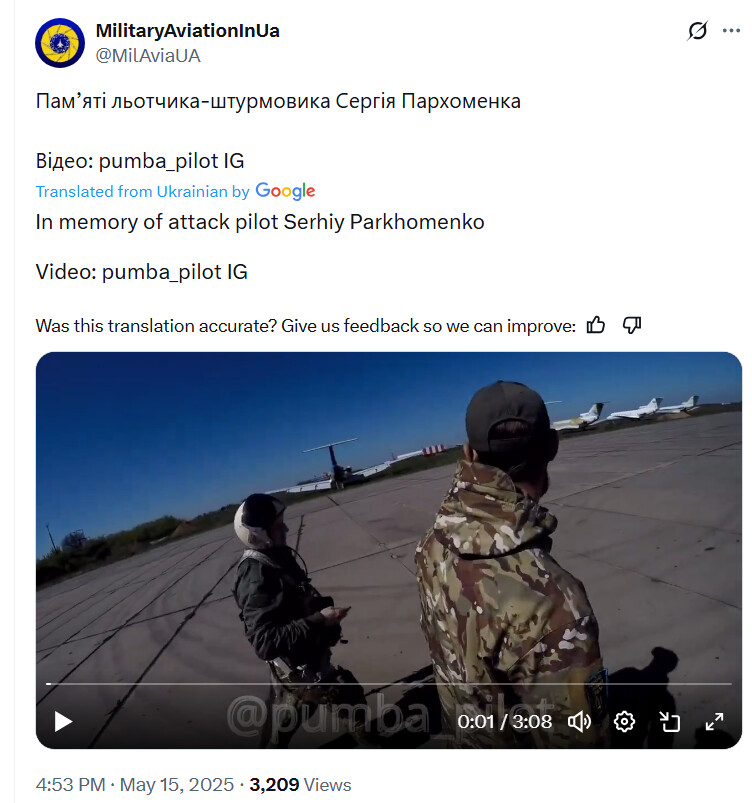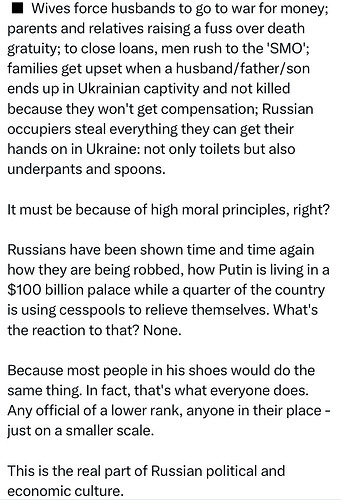Yikes…a small transgression into a NATO country to see what happens.
The Economist:
Would Vladimir Putin attack NATO?
Russia is building up its forces, causing fear in its neighbours

Illustration: Rebecca Hendin
May 8th 2025|NARVA
EGERT BELITSEV, the head of Estonia’s border force, calls it the edge of the free world. A bridge stretches between the outer walls of the Hermann Castle in Narva, on the Estonian side, and those of the Ivangorod Fortress, in Russia. Swollen by the melting snows, the Narva river seethes underneath. Two giant screens recently erected on the Russian side facing Estonia were expected to stream video of the parade in Red Square on May 9th commemorating victory in the second world war. The sounds of drums and the images of goose-stepping Russian soldiers are bound to induce anxiety in Estonia, which was annexed in 1940 by Stalin and was occupied by the Soviet Union from 1944 until 1991.
Provocations are routine. Russia has been jamming GPS signals throughout the region, disrupting air traffic and search-and-rescue operations. Last year Russian border guards removed buoys on the Narva, which mark the border. Surveillance blimps are a regular sight in the skies. More concerning is what can be seen on satellite images. Although Russia’s bases near the Estonian and Finnish borders are nearly empty, with troops and equipment sent to Ukraine, new construction is under way.
On paper, Russia has big plans. It aims to expand its armed forces to 1.5m active troops, up from about 1.3m in September. In 2023 it announced the creation of a new formation, the 44th Army Corps, in Karelia, along the Finnish border. The 44th’s first units were blooded in Ukraine last year. Russia is also expanding several brigades into larger divisions. All this will take years to accomplish. But if Russia succeeds, notes Lithuania’s intelligence agency, it will increase troops, equipment and weapons on its western front by 30-50%. “During 2024”, noted a recent Danish intelligence assessment, Russian rearmament “changed character from reconstruction to an intensified military build-up”. The goal is to be able “to fight on an equal footing with NATO forces”.
Some argue that Russia is bound to attack. “It’s a question of when they will start the next war,” argued Kaja Kallas last year, when she was Estonia’s prime minister (she is now the EU’s foreign-policy chief). Emmanuel Macron, France’s president, in March pointed to Russia’s breakneck rearmament. “How believable is it, then,” he asked, “that today’s Russia will stop at Ukraine?” Others are sceptical that Russian ambitions range much beyond the Dnieper river. Pedro Sánchez, Spain’s prime minister, scoffs at the notion of a big war: “Our threat is not Russia bringing its troops across the Pyrenees.” Steve Witkoff, Donald Trump’s envoy for peace talks with Russia, when asked whether Russia intended to “march across Europe”, responded simply: “100% not.”
Intelligence analysts frame threats in terms of two variables: intent and capability. There is no specific intelligence at present that suggests Russia intends to attack NATO. But intentions are fluid. In his public speeches, Vladimir Putin has justified his war to conquer Ukraine in several ways: the need to defend Russian-speakers in Donbas; the imperative of “demilitarising” and “de-Nazifying” Ukraine; and the need to keep a supposedly hostile NATO at bay. In February 2022, on the eve of war, Mr Putin blamed Lenin for tearing apart the Russian empire, implicitly casting doubt on the sovereignty not only of ex-Soviet states like Ukraine, but also of those once part of that empire, such as Finland.
Yet for Mr Putin, war may be less about external threats than about prolonging and trying to legitimise his reign. In his 25 years in power, he has waged five wars. Each began with his popularity sagging; each ended with his authority enhanced. At the start of the war few Russians believed the Kremlin’s line that Russia was threatened by the West. It has since become more widely accepted—not least because Mr Putin’s propaganda was reinforced by some Western rhetoric that blamed all Russians for the war. This has alienated those who were initially sympathetic towards Ukraine and the West.
Rallying round the flag
Though a majority of Russians would prefer the war to end, most also credit the war with boosting the country’s international clout, according to a joint survey conducted by the Chicago Council on Global Affairs and the Levada Centre in Moscow. In the past, 60% of Russians prioritised high living standards over great-power status. Today 55% of Russians favour power projection over high living standards. They may be getting part of their wish. After three years of war, Russia’s economy is sliding towards stagnation. Inflation remained stubbornly above 10% in the year to March despite the central bank holding its benchmark interest rate at 21%.
Sometimes it is capability that shapes intentions. In a recent interview, Mr Putin said that the war in Ukraine is the culmination of a long-standing confrontation with the West. After he grabbed Crimea from Ukraine in 2014 he stopped, not because he lacked the will to grab more, but because he lacked the means. “In 2014 the country wasn’t prepared for a head-on confrontation with the entire collective West, which is what we’re seeing now.”

Chart: The Economist
Yet Mr Putin’s zest for war and his ability to wage it are two different things. In Ukraine his troops have spent nine months unsuccessfully assaulting Pokrovsk, with a pre-war population of 70,000 people, while suffering more than 1,000 dead and wounded every day. Russia’s army is incapable of complex manoeuvres and a generation of officers has been lost. Its air force rarely ventures into Ukraine, preferring to hurl glide bombs from a safe distance. As long as the war in Ukraine grinds on, Russia will have no spare ground forces to mount a serious threat to NATO. But even if a ceasefire is signed, Russia might struggle to divert large numbers of troops, notes Konrad Muzyka, an analyst, because that might allow Ukraine to recapture territory.
Russia, therefore, would have to build new forces. Western intelligence agencies have scrutinised how long that might take. Their conclusions vary considerably. America talks of Russia reconstituting its army “during the next decade”. Norwegian intelligence reckons five to ten years “at the earliest”. Ukraine’s estimates suggest five to seven; Germany’s are five to eight. Estonian spooks appear to be the least sanguine, offering a three-to-five year timeline for Russia to build new formations, depending on the course of the war, Russia’s economy and whether sanctions remain.
These timelines hinge on a variety of factors. Russia is churning out munitions at extraordinary speed—more than 1,400 Iskander ballistic missiles per year, as well as 500 Kh-101 cruise missiles, according to Ukrainian estimates and a recent report by the Royal United Services Institute (RUSI), a think-tank in London. But in other areas, current production rates are unsustainable. Just 10-15% of the 1,500-2,000 tanks and 3,000 other armoured fighting vehicles being produced annually are new, notes RUSI. The rest are refurbished from old Soviet stockpiles. These could run dry by 2026 if present loss rates continue, notes Dara Massicot of the Carnegie Endowment. Russian armour production might have peaked this year, says Mr Muzyka.
Manpower is also a serious constraint. In the short term, Russia is recruiting some 30,000 men a month, but over the longer run it faces challenges from a declining and ageing population.
More important is the quality of these forces. “Materiel recovery will be much faster and easier than the actual ability to employ the force,” argues Michael Kofman, also of the Carnegie Endowment. Russia’s armed forces have improved dramatically in some areas, he says, such as finding and striking targets using drones, but their ability to scale this up is limited by the quality of troops, officers and staff work.
The men in the foxholes
The quality of Russia’s forces has been hurt by grievous losses. Western officials reckon since late 2024, Russian military hospitals have been operating at maximum capacity. General Chris Cavoli, NATO’s Supreme Allied Commander Europe, said in April that Russia had suffered an estimated 790,000 casualties. Many of those who have been killed or wounded are the junior officers needed to lead units in an expanded force. Public funeral notices suggest that between 2022 and 2024 Russia lost about as many lieutenants as would normally be needed to staff ten divisions or brigades, writes Ms Massicot.
A recent study by the RAND Corporation, an American think-tank, explores the different ways Russia could rebuild its armed forces. For many years before the invasion of Ukraine, Russian leaders sought to build a leaner, more professional force that relied on technology and agility. That model is now in the dustbin. Russia is reverting to an older, cruder way of war: “The centrepiece of these reforms is not innovation and technological adaptation. Rather, it is a return to mass and firepower.”
Russia’s ability to sustain a military build-up is also constrained by its struggling economy. Last year it spent 6.7% of GDP on defence, according to official figures, with spending forecast to rise this year. Yet not all of this money will be used to buy new equipment, since the figure includes payments to injured soldiers and the families of those who have been killed, as well as large salaries to entice people to sign up as contract soldiers.
The slog of war
One camp therefore argues that the threat from Russia, though real, is more manageable than commonly thought. The new formations, such as the 44th Army Corps destined for the Finnish border, are “Potemkin units”, says John Foreman, who served as Britain’s defence attaché in Kyiv and Moscow. In the latter post, he recalls, Russia claimed that it had 1m men under arms; the true figure at the time was 880,000.
Moreover, the accession of Sweden and Finland to NATO has drastically worsened Russia’s position in NATO’s north. The idea that Russia could extricate itself from Ukraine, reform its army and “march on Warsaw” is “an absolute fantasy”, concludes Mr Foreman. He doubts that Russia has any intention to attack, in any case.

Illustration: Rebecca Hendin
Another school of thought retorts that Russia’s ability to wage war depends very much on the sort of war being waged. “In the medium term, Russia is unlikely to be able to build up the capabilities needed for a large-scale conventional war against NATO,” acknowledges Lithuania’s defence intelligence agency. “However, Russia may develop military capabilities sufficient to launch a limited military action against one or several NATO countries.” Danish intelligence sounds a similar warning: it would take five years for Russia to be ready for a big war (not involving America). But it would take only two years to prepare for a “regional war” against several countries in the Baltic-sea area, and a paltry six months to be able to fight a “local war” against a single neighbouring country.
Russia could shift 50,000 troops from Ukraine to its Leningrad military district with a minimal impact on the current war, argues Hanno Pevkur, Estonia’s defence minister. “But this would significantly change the force posture of the Russian army close to Estonia,” he warns. “To have a localised small conflict, they don’t need to have all the troops available from Ukraine.”
There are big caveats to these scenarios. The Danes assume that NATO would not rearm “at the same pace”, a premise that looks shakier today as European NATO allies, spooked by Mr Trump’s assault on them, pour money into their armed forces. The more important assumption is that Russia could keep a war localised in the first place. NATO currently deploys a string of “forward” battlegroups in eight countries, from Estonia down to Bulgaria, involving troops from 28 separate countries. American troops are present in at least three of them. Increasingly NATO is also “shadowing” Russian exercises, ensuring that it monitors and matches surges of Russian troops near the border; the “Zapad” exercise in Russia and Belarus later this year will be watched closely.

Map: The Economist
In order to fight a limited conflict, Russia would have to assume either that these forces would stand by or pull back—or, at least, that America would not step in (an assumption that would be strengthened were America to be distracted elsewhere, for instance by a Chinese attempt to invade or blockade Taiwan). That would certainly even up the odds.
Our calculations suggest that, even after adjusting for Russia’s lower wages and costs and its increased budgets, Mr Putin’s defence spending does not match that of NATO’s European members. Yet fragmentation and duplication mean that at least some of Europe’s spending is wasted. More importantly, although European forces are well armed on paper, they would struggle to target their long-range weapons, organise complex air operations, command big formations and defeat Russian air defences without American involvement. Poland, for instance, has oodles of long-range rocket launchers. But it does not have the means to find targets for them far behind the front lines. For now, most European countries are operating on the assumption that America, even under Mr Trump, will keep up that support for long enough for Europe to fill in the gaps over time—a managed transition rather than a disorderly withdrawal.
Looking for a soft flank
If that assumption holds, and if European rearmament gains pace—both big ifs—Russia is likely to remain deterred from taking any acts of war that would trigger NATO’s Article 5 mutual-defence clause. But its appetite for risk could nonetheless grow, not least if it judges that Mr Trump might overlook smaller transgressions. “Russia will gradually become more willing to use military force in the coming years to put pressure on or challenge NATO as a whole or individual NATO countries,” argues Danish intelligence.
That could involve relatively minor incidents, such as the reckless decision to interfere with American, British and French surveillance aircraft in recent years. But it could also entail more ambitious efforts to destabilise what Russia views as peripheral territory, such as the Norwegian island of Svalbard, where it might be harder to gain a consensus among NATO allies on a timely response. Non-nato states would also be easier prey still. “If you saw Russian troops from Transnistria moving into some part of Moldova,” says one intelligence insider, “I think that would be a very, very difficult contingency to deal with, and it would split nato.”
Predicting future wars is always fraught. During the cold war, America and the Soviet Union habitually misunderstood both the intentions and capability of the other. In “Watching the Bear”, a collection of essays published by the CIA in 1991, Raymond Garthoff, a former CIA analyst, reflected on the tendency, in the 1950s and 1960s, and again in the 1970s and 1980s, “to impute offensive intentions to increasing Soviet strategic offensive capabilities”. Soviet thinking, in turn, he notes, was marked by “considerable exaggerations of Western bellicosity and capabilities, including planning for initiation of war”.
But understating the risks is also dangerous. The chances of a big war near Sweden remain low, says the country’s spy agency. However, a “limited armed attack” against a Baltic state or NATO ships is entirely possible, it warns. “Such action could seem disadvantageous from a Swedish perspective,” explain the spies, “but it is important to emphasise that the Russian leadership makes decisions based on its own logic and assessment.” ■
